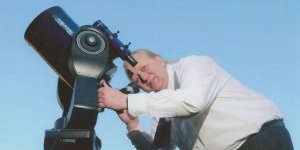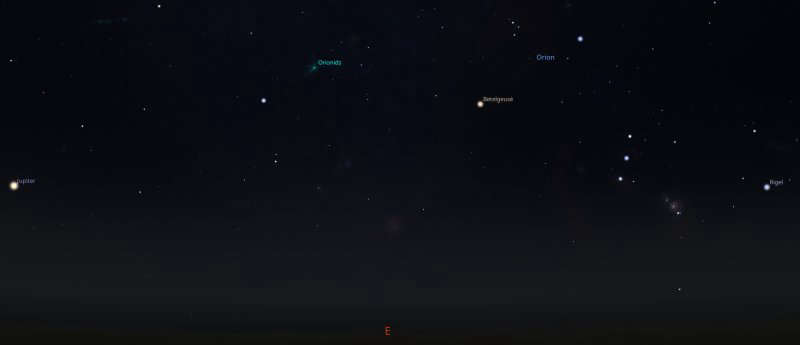
Monday 20th to Sunday 26th October 2025
Tuesday 21st is the peak of the annual Orionids meteor shower, so named because the radiant point where the shooting stars appear to originate from is close to the constellation of Orion.
If you go outside from around 11pm. Orion will have risen above the horizon to the east and the radiant point of the shower will be a little to the left of the red giant star Betelgeuse. While you are waiting for those streaks of light to appear, further to the left, Jupiter will be easy to spot.

As a bonus, that evening coincides with a New Moon, when the side of the Moon facing us is not illuminated at all by sunlight, so there will be no light pollution from our celestial neighbour to spoil the view.
Meteor showers are caused by the Earth scooping up the debris left by comets while they travel close to the Sun on their long journey from the outer reaches of our Solar System. As we orbit around the Sun, these showers occur at the same time every year. In the case of the Orionids, they are caused by bits left behind from comet Halley.
The shower has a zenithal hourly rate in excess of 20 meteors per hour, so you shouldn't be waiting too long before you see something and if you can't make Tuesday 21st, observing a couple of days before or after the peak should still produce some results.
Finally, an early reminder that the first of my astronomy talks and star parties for this season will be taking place at the Ham Hill Visitor Centre on the evening of Friday 28th November. There will be a one-hour talk about the night sky at
www.starsoversomerset.com
Screenshots courtesy of Stellarium
Copyright Adrian Dening and Radio Ninesprings 2025

 Winter Coat Scheme
Winter Coat Scheme
 Recycling
Recycling
 Ilminster Local Plan
Ilminster Local Plan
 Hate Crime
Hate Crime
 False Fire Alarms
False Fire Alarms
 Dog DNA
Dog DNA








